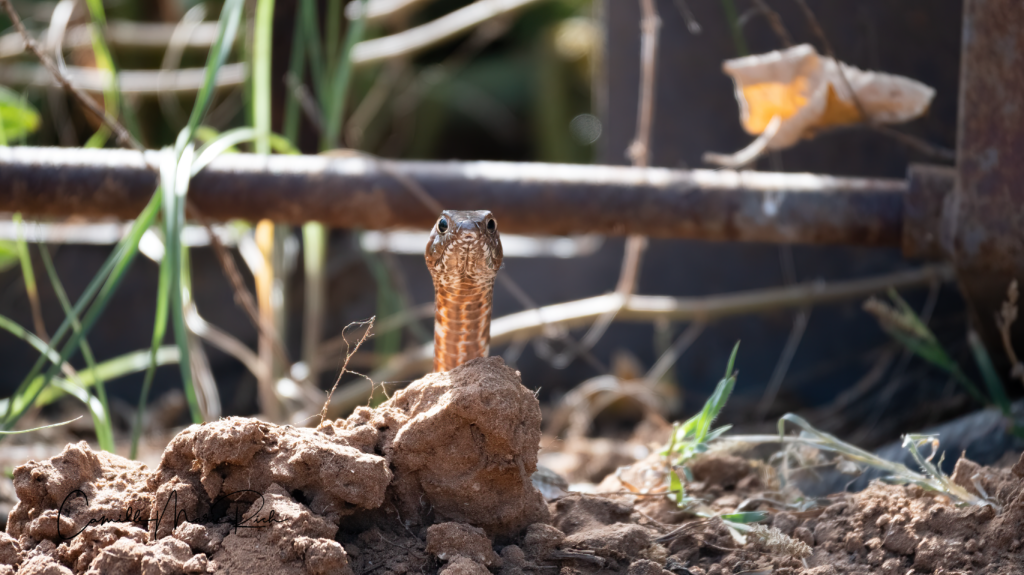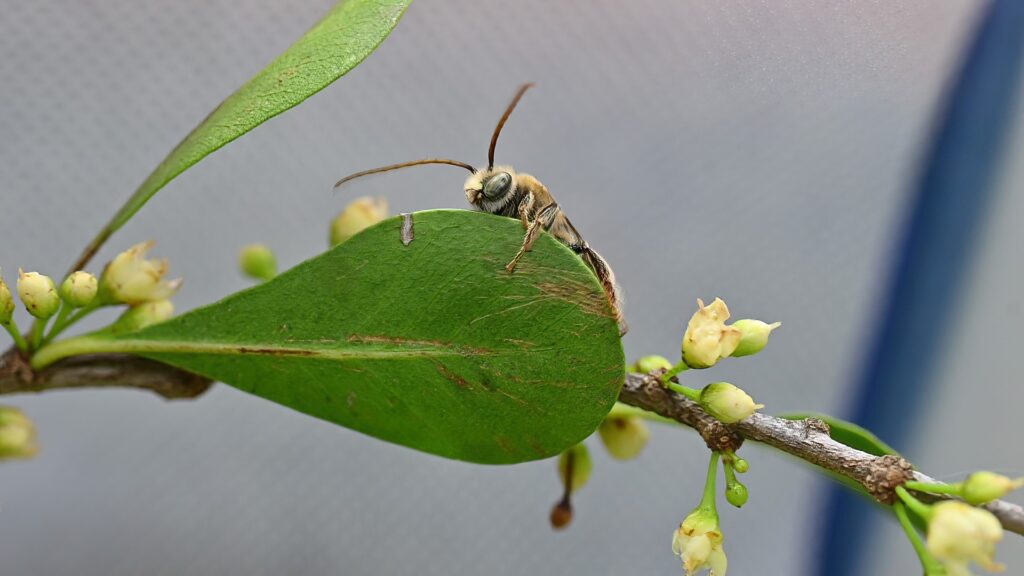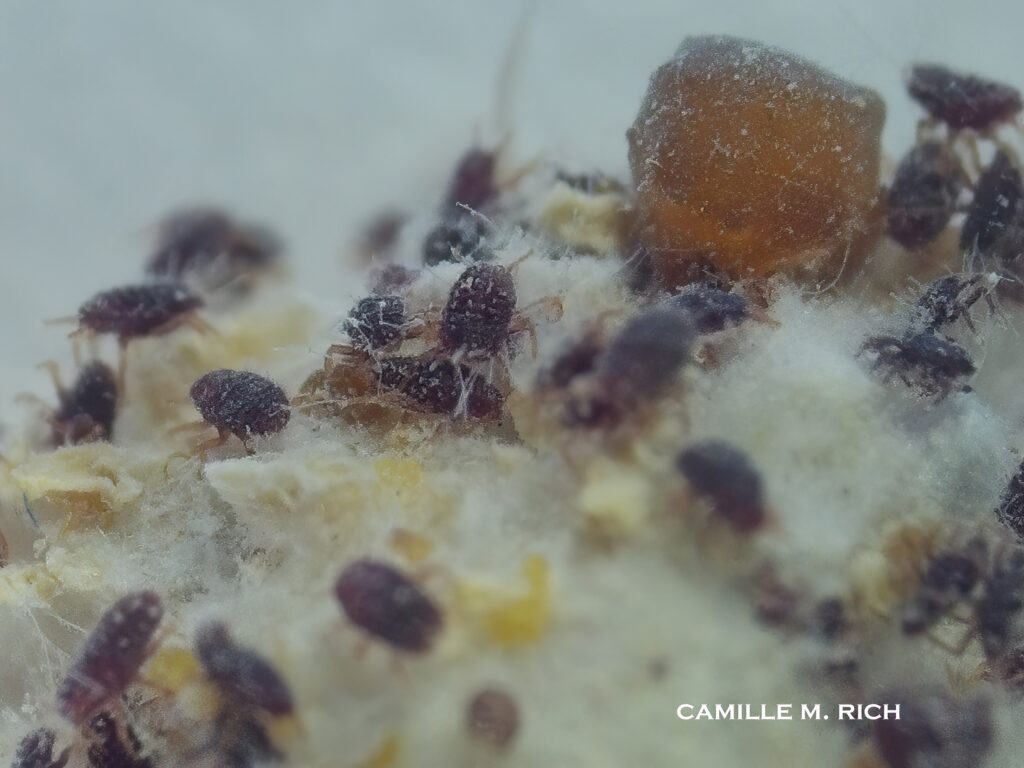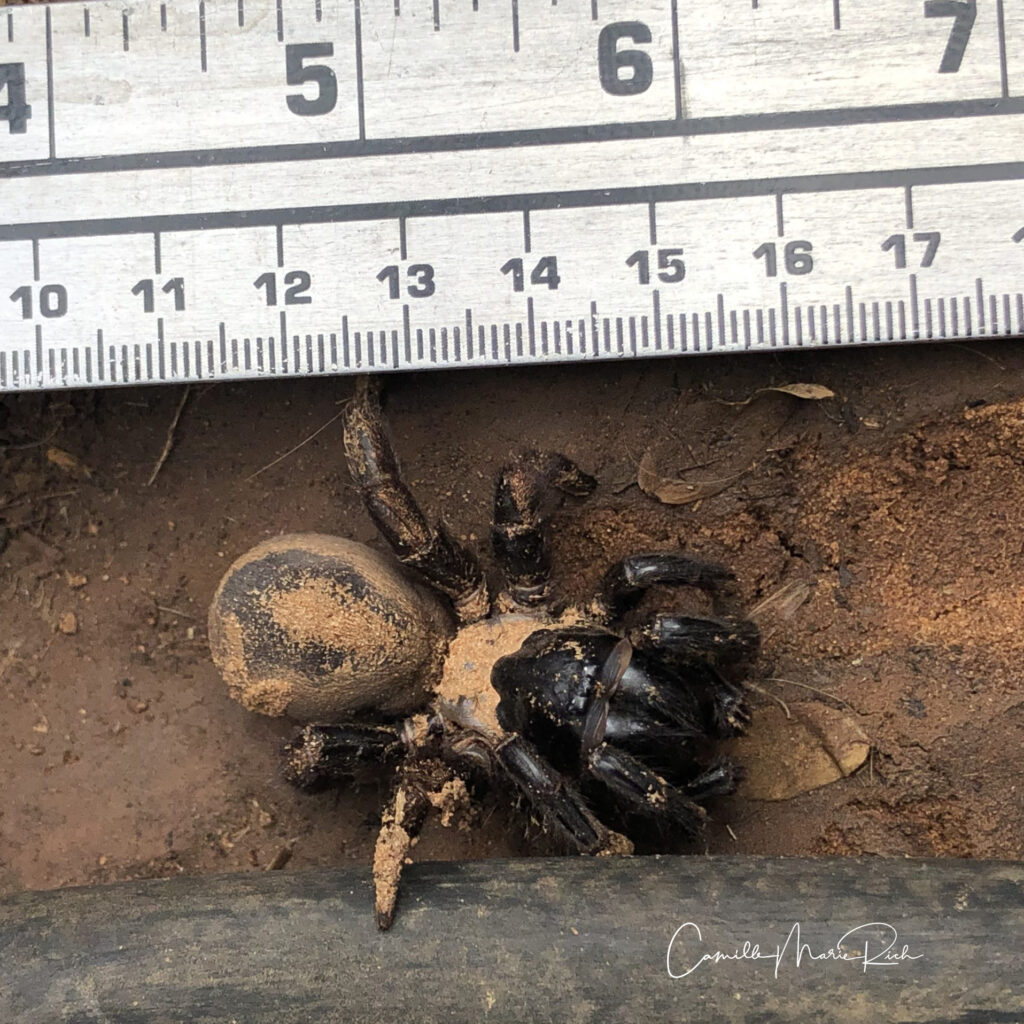
This long, slender, non-venomous Coachwhip, a Texas native snake, stopped by the other day for a nice visit. It was basking in the sun near an old, repurposed hay cart that had been adorned with pieces of dead, dried Black Brush tree branches in order to support two different varieties of native Passion Flower vine.
This slender snake, with a small head and large eyes, lay motionless. Its concealment was incredible; it very closely resembled the dead, dried Black Brush tree branches that it was lying near at the time. It took a moment for my brain to process exactly what I was looking at. When I finally realized that I was staring at a snake, I was quite startled! I must have jumped back about five feet! Very quickly, however, my “fear” reaction shifted to one of curiosity, wonder, and amazement at its beauty.
Naturally, I wanted to document this lovely creature with a portrait, but where was my camera when I needed it?

I made a mad dash a few yards back to my truck to grab my camera in order to try and snap of few pics of its cute little face before it decided to move along to another location. Luckily, for me, it was in no hurry to high tail it out of there. I was able to photograph its head and the interesting upward arch of the first sections of its vertebrae as it appears to hold its head up in a telescoping fashion. Additional, interesting notes about this snake are that they are noted to be agile and quick. I have even read that they hunt rattlesnakes!
If you would like more in-depth information on Coachwhips and other snakes that are native to Texas, sources for this information are plentiful. Nonetheless, one of the books that I keep close by for quick reference is, “Texas Snakes: A Field Guide,” by James R. Dixon and John E. Werler. Drawings by Regina Levoy. University of Texas Press. Austin, Texas. 2000.




